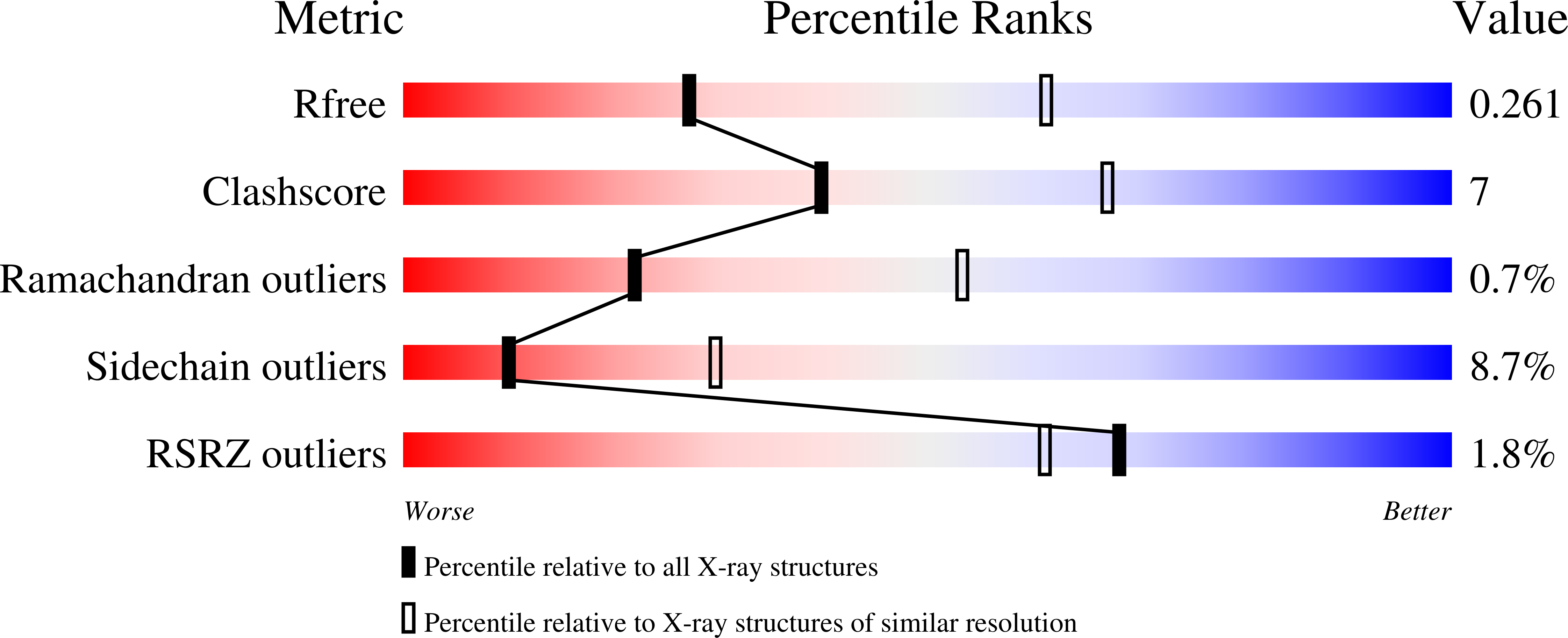Structural Basis for Ligand Promiscuity in Cytochrome P450 3A4
Ekroos, M., Sjogren, T.(2006) Proc Natl Acad Sci U S A 103: 13682
- PubMed: 16954191
- DOI: https://doi.org/10.1073/pnas.0603236103
- Primary Citation of Related Structures:
2J0D, 2V0M - PubMed Abstract:
Cytochrome P450 (CYP) 3A4 is the most promiscuous of the human CYP enzymes and contributes to the metabolism of approximately 50% of marketed drugs. It is also the isoform most often involved in unwanted drug-drug interactions. A better understanding of the molecular mechanisms governing CYP3A4-ligand interaction therefore would be of great importance to any drug discovery effort. Here, we present crystal structures of human CYP3A4 in complex with two well characterized drugs: ketoconazole and erythromycin. In contrast to previous reports, the protein undergoes dramatic conformational changes upon ligand binding with an increase in the active site volume by >80%. The structures represent two distinct open conformations of CYP3A4 because ketoconazole and erythromycin induce different types of coordinate shifts. The binding of two molecules of ketoconazole to the CYP3A4 active site and the clear indication of multiple binding modes for erythromycin has implications for the interpretation of the atypical kinetic data often displayed by CYP3A4. The extreme flexibility revealed by the present structures also challenges any attempt to apply computational design tools without the support of relevant experimental data.
Organizational Affiliation:
AstraZeneca R&D M?lndal, S-431 83 M?lndal, Sweden.


















